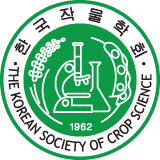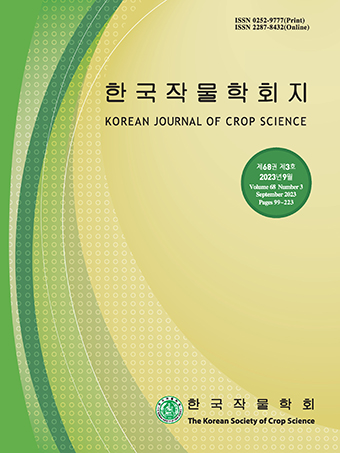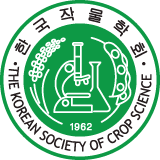Abstract
References
Information
Chung, I. M., J. Y. Oh, and S. H. Kim. 2017. Comparative study of phenolic compounds, vitamin E, and fatty acids compositional profiles in black seed-coated soybeans (Glycine max (L.) Merrill) depending on pickling period in brewed vinegar. Chemistry Central Journal. 11(1) : 64-74.
10.1186/s13065-017-0298-929086850PMC5515724
Kim, E. H., H. M. Ro, S. L. Kim, H. S. Kim, and I. M. Chung. 2012. Analysis of isoflavone, phenolic, soyasapogenol, and tocopherol compounds in soybean (Glycine max (L.) Merrill) germplasms of different seed weights and origins. Journal of Agricultural and Food Chemistry. 60(23) : 6045-6055.
10.1021/jf300463f22577842
Kim, S. H., B. R. Yu, and I. M. Chung. 2015. Changes in the contents and profiles of selected phenolics, soyasapogenols, tocopherols, and amino acids during soybean-rice mixture cooking: electric rice cooker vs electric pressure rice cooker. Food Chemistry. 176(1) : 45-53.
10.1016/j.foodchem.2014.12.02425624205
Parr, A. J. and G. P. Bolwell. 2000. Phenols in the plant and in man. The potential for possible nutritional enhancement of the diet by modifying the phenols content or profile. Journal of the Science of Food and Agriculture. 80(7) : 985-1012.
10.1002/(SICI)1097-0010(20000515)80:7<985::AID-JSFA572>3.0.CO;2-7
Rupasinghe, H. P., C. J. Jackson, V. Poysa, C. Di Berardo, J. D. Bewley, and J. Jenkinson. 2003. Soyasapogenol A and B distribution in soybean (Glycine max L. Merr.) in relation to seed physiology, genetic variability, and growing location. Journal of Agricultural and Food Chemistry. 51(20) : 5888- 5894.
10.1021/jf034373613129290
Takada, Y., H. Sasama, T. Sayama, A. Kikuchi, S. Kato, M. Ishimoto, and C. Tsukamoto. 2013. Genetic and chemical analysis of a key biosynthetic step for soyasapogenol A, an aglycone of group A saponins that influence soymilk flavor. Theoretical and Applied Genetics. 126(3) : 721-731.
10.1007/s00122-012-2013-523229125
- Publisher :The Korean Society of Crop Science
- Publisher(Ko) :한국작물학회
- Journal Title :The Korean Journal of Crop Science
- Journal Title(Ko) :한국작물학회지
- Volume : 65
- No :4
- Pages :457-467
- Received Date : 2020-07-17
- Revised Date : 2020-10-25
- Accepted Date : 2020-11-02
- DOI :https://doi.org/10.7740/kjcs.2020.65.4.457




 The Korean Journal of Crop Science
The Korean Journal of Crop Science








